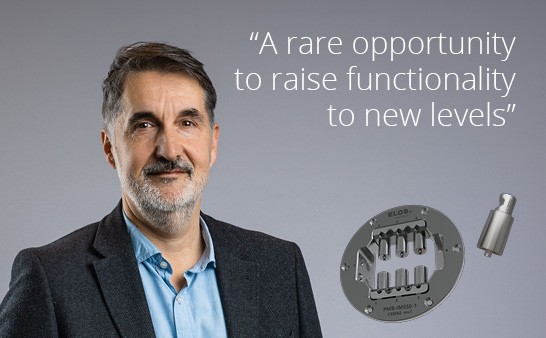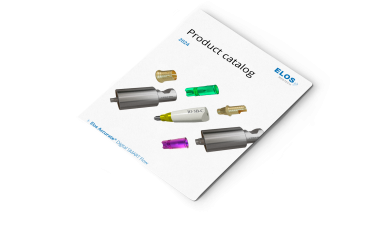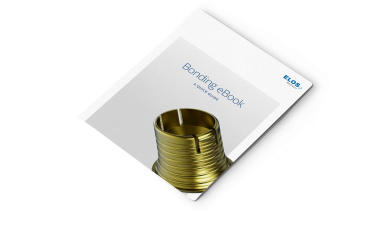Ralph Erhard was hired to do one job.
Based in Germany, Ralph had for two decades been a successful CAD/CAM dental implantology software specialist. Since graduating top of his class as a “Zahntechnikermeister” (master dental technician) in 1999, he had racked up valuable experience running his own company and serving in senior roles at a major digital dental company.
Then came the call from Elos Medtech. “I was a consultant at the time, back in 2021,” he recalls. “And the mission Elos had for me was pretty straightforward: help develop a new pre-milled blank solution from the ground up.”
The mission may have sounded straightforward—actually accomplishing it was another matter. Although Elos already had its own blanks solution, it was more of a solution for specialized milling centers, not a plug-and-play application for easy-to-use. “What Elos had in mind when it contacted me,” says Ralph, “was a completely different animal: a pre-milled blanks solution for in-house milling. In-house milling has different requirements than its industrial-scale cousin. The milling machines are different, the regulatory frameworks are different, the end-user needs are worlds apart.”
“A new level of stability”

Elos Medtech’s decision to design its own first solution for in-house milling was a double-edged task for Ralph and the company’s development team. On one hand, developing a solution from scratch was a daunting prospect. On the other, it was a rare opportunity to raise functionality to new levels. “It was every technician’s dream,” adds Ralph, “a chance to work on a blank slate and make fundamental innovations.”
One area where the Elos team decided to make a fundamental improvement was to the stability of the blank during the milling process. After evaluating all available systems, the team found milling instability—and its resulting inaccuracies—to be near universal. “It was,” says Ralph, “as if the makers of pre-milled blanks were more focused on the blank itself, but neglected the stability and precision of the entire system when processing it in the machine.” Ralph and the team took a radically different approach and decided that the holder, and not just the blanks, would be designed and manufactured as if they were Class II medical devices. “After all,” asks Ralph, “what’s the point of having a Class II pre-milled blank, then milling it in a holder that is built to less stringent quality and tolerances?”
The focus on stability led to another fundamental innovation: the proprietary GuideLock™ clamping system. Put simply, it is a self-positioning solution that removes the risk of human error when mounting a blank in the holder. Indeed, one California lab owner and early adopter of the solution reports that GuideLock provides “a level of stability I’ve never seen before.”
Additional accuracy comes from the design and dimensions of the holder. Ralph comments: “Instability of the blank is not the only cause of vibrations and inaccuracies during milling. The precision and dimension of the holder is also crucial. To eliminate this, we gave the holder additional strength in the essential areas by making it with a height of 20 mm instead of the 16 mm that is usual for existing holders. We also restricted the manufacturing tolerances of the critical fit areas to an absolute minimum.” The insistence on extremely tight tolerances posed a real challenge for the holder manufacturers. “Yeah… it was tough, especially given the size of the component. Everything worked out, but looking back, I’m not sure the guys loved us for it!”
Expanded design freedom
Another fundamental innovation came with the development of the blanks’ design area. A top concern was to meet market demand for lower gingival heights in order to provide esthetically perfect prosthetics for implants placed at tissue level. “Implants that are inserted at tissue level,” explains Ralph, “have always been a challenge for dental technicians when it comes to so-called red-white esthetics.”
Red-white esthetics refers to the appearance of the area between gingiva and tooth, which often plays a key role when it comes to natural-looking crowns, especially in the frontal area. “The use of blanks,” explains Ralph, “that limit the user’s freedom of design in this area through an unchangeable and predefined gingiva height cannot lead to perfect aesthetic results.”
The team’s answer was to narrow the gingiva transition zone to an extraordinary 0.1 – 0.3mm. “The Elos Medtech development center in Denmark did an amazing job,” says Ralph. “And the feedback from beta testers and early adopters has been really encouraging. The narrow zone gives the labs significantly more design area; there is so much more room for them to truly customize solutions for individual patients.”
The successful conclusion of the Elos Accurate Pre-Milled Blank Solutions affected more than labs, clinics and patients. It also impacted Ralph, who joined Elos Medtech Dental full-time with the title of Senior Manager Technical Support and Sales. “Well,” he says, “the development journey for the pre-milled blanks was so rewarding, that it was a relatively easy decision to come aboard. Moreover, developing and launching the solution is only one part of the journey. Now we have to implement it worldwide, something I look forward to doing together with our wonderful CAM software and milling machine partners.”
Learn more about the Elos Accurate® Pre-Milled Blank Solutions



